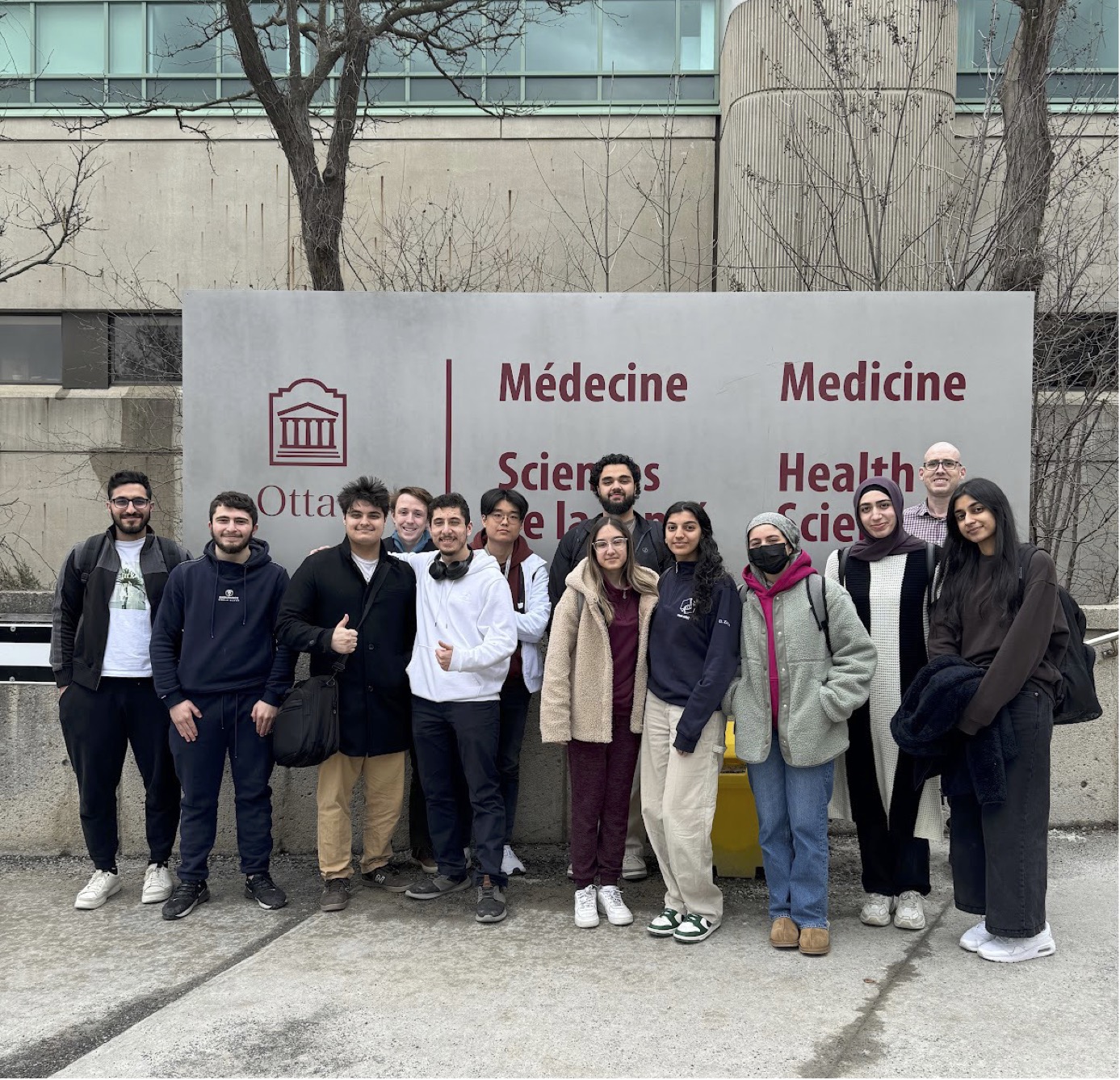Below is a summary of the abstract you submitted. Presenting author(s) is shown in bold.
If any changes need to be made, you can modify the abstract or change the authors.
You can also download a .docx version of this abstract.
If there are any problems, please email Dan at dar78@pitt.edu and he'll take care of them!
This abstract was last modified on March 19, 2024 at 1:45 a.m..

Bacteriophages are viruses that selectively infect and kill bacteria. Phages kill host bacteria by replicating within the cell, followed by lysis. Phages may be lytic or lysogenic, whereby they insert their viral genome into the host genome, existing in a “dormant” state as a prophage.
uOttawa PhageHunters have found and sequenced seventeen AZ cluster phages that infect Arthrobacter globiformis. Here we describe two unique AZ cluster phages, Exile and AinMach, that infect Arthrobacter sulfureus. Exile, AinMach and Soondubu, a phage found in California at UC, Los Angeles, are distinct from the previously annotated cluster AZ4 phages that infect A. sulfureus, and we are using comparative genomic methods to determine if these three phages should form a new subcluster.
Exile bacteriophage was discovered by Soniya Agarwal and collected from underneath a young tree in Stittsville, Ottawa. Exile was partly named after the song “Exile” by Taylor Swift, but more for the trouble the phage caused. During purification and amplification, Exile was difficult to work with due to its lysogenic nature. Exile’s plaques were inconsistent, with two distinct morphologies present: bullseye plaques and small, clear plaques. After second, third, and hundredth chances, Exile yielded a remarkably high titre of greater than 10^13 pfu/mL. Exile’s genome spans 44,132 base pairs, containing 65.3% GC content and sixty-one genes. Exile shows remarkable similarity to BaileyBlu, an FP cluster phage and to Soondubu, of which it shares ten unique phams.
AinMach was discovered by Ryan Zammar from the soil of a flower bed at his home. It is named after Ain Ebel and Machgharah, the two Lebanese villages from where his parents were born. The plaques formed from this phage are large. AinMach’s genome spans 43,628 base pairs, containing 65% GC content and sixty-nine genes. Comparing AinMach’s genome to other phages in PhagesDB shows that AinMach’s genome is unique. About 26% of AinMach’s genes are orphams.
AinMach codes for a potentially unique capsid maturation protease (gp4). Notably, the pham downstream (gp5) is shared with only three annotated phages, including the FM cluster phages Kharcho and Ottawa, which were also discovered in Ottawa. We noted that the GeneMarkS file suggests a potential translational frameshift between these two genes, and we are investigating if this frameshift can occur in an E. coli expression system.
We have isolated lysogens of both AinMach and Exile, and are in the process of purifying them, confirming they are stable, and testing whether they confer super-infection immunity against themselves, and other A. sulfureus phages we have isolated in the laboratory. AZ phages contain a proposed lysogeny cassette anchored by a conserved DNA binding protein, SprT-like protease and a serine integrase. These three genes are present in AinMach, but unlike all other AZ phages, no additional phams are present in this region.

